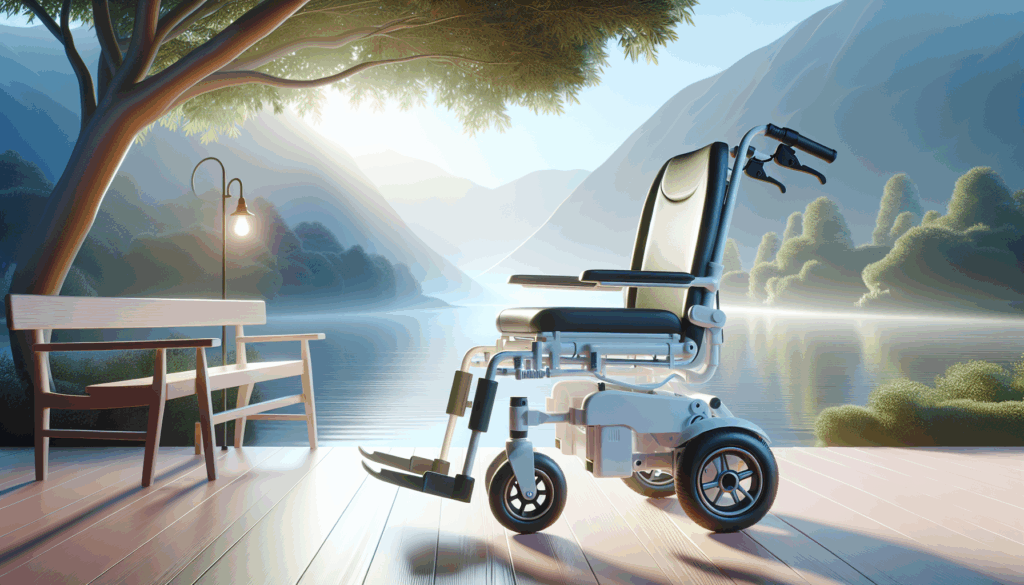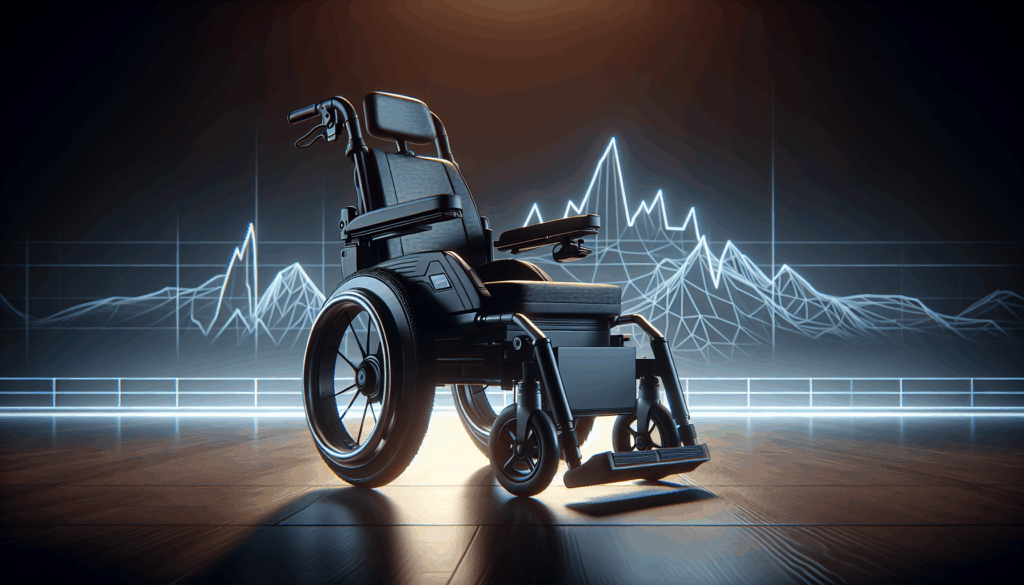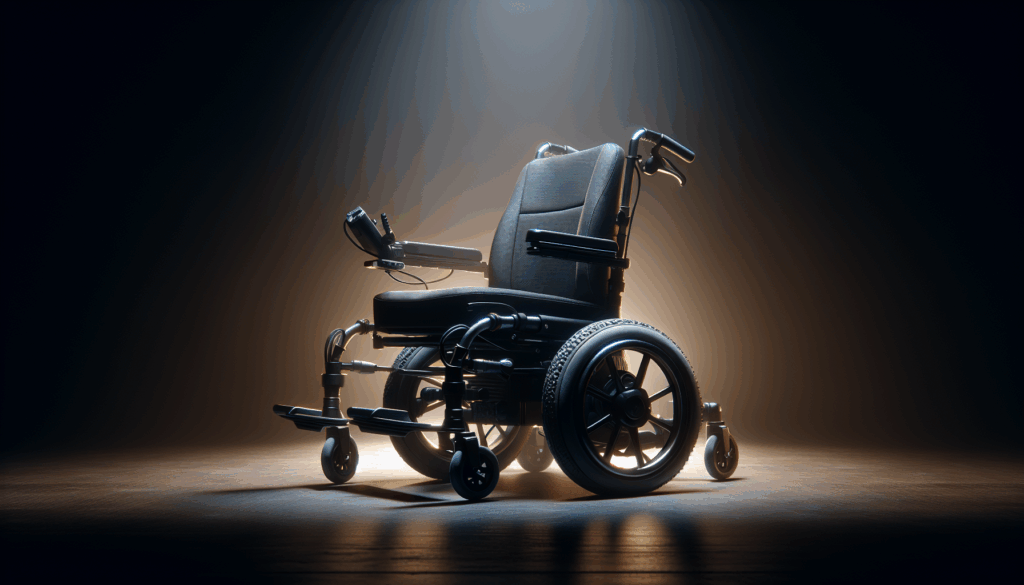The evolution of mobility aids has significantly changed the lives of many individuals, particularly in Malaysia, where the electric wheelchair has seen a remarkable surge in popularity compared to traditional manual wheelchairs. With prices ranging from RM 2,499 to RM 14,999 for electric wheelchairs and as low as RM 300 for manual options, it’s clear that investment in more advanced mobility technology is becoming increasingly feasible for many. This shift not only highlights the growing awareness of mobility challenges but also underscores the importance of comfort, independence, and ease of use that electric wheelchairs offer.
As more Malaysians embrace these innovations, understanding the reasons behind the transition from manual to electric wheelchairs becomes crucial in assessing the current landscape of mobility aids in the country.

The Evolution of Wheelchair Technology in Malaysia
The evolution of wheelchair technology in Malaysia has seen a significant shift from traditional manual wheelchairs to advanced electric wheelchairs. As technology has progressed, electric wheelchairs have become increasingly accessible, not only in terms of design but also in price. With costs ranging from RM 2,499 to RM 14,999, electric wheelchairs offer enhanced mobility and independence for users who might struggle with the physical demands of manual wheelchairs, which typically start at around RM 300. This transition reflects the changing needs of individuals with mobility challenges, as many seek solutions that provide greater ease of use and versatility.
Electric wheelchairs, equipped with powered motors and battery systems, cater to a wide array of users, including the elderly and individuals with severe disabilities. The convenience and functionality of these modern devices have made them a preferred choice among many Malaysians, leading to a noticeable increase in users. As more individuals recognize the benefits of electric wheelchairs, such as reduced physical strain and improved accessibility, the demand continues to grow. This evolution not only highlights the advancements in wheelchair technology but also underscores the importance of providing better mobility solutions for all, ultimately paving the way for a more inclusive society in Malaysia.
Understanding the Appeal of Electric Wheelchairs
Electric wheelchairs have garnered significant attention in Malaysia due to their advantages over traditional manual wheelchairs. One of the primary appeals of electric wheelchairs lies in their ease of use. Unlike manual wheelchairs, which require physical effort to maneuver, electric wheelchairs offer users the ability to navigate with just a push of a button. This is particularly beneficial for individuals with limited upper body strength or those who may tire easily.
Additionally, the technological advancements in electric wheelchair designs have enhanced their overall performance, making them more reliable and user-friendly. The ability to adjust speed, battery life, and comfort features caters to a diverse range of needs, which has contributed to the growing popularity of these mobility aids in Malaysia. Furthermore, the price range of electric wheelchairs, which starts from RM 2499, has become more accessible for many, allowing a broader demographic to consider this option.

Moreover, the rise of electric wheelchairs has coincided with an increased awareness of accessibility issues in Malaysia. As urban environments become more accommodating, the demand for efficient mobility aids has surged. Public spaces that cater to electric wheelchairs can significantly enhance the user experience, encouraging more individuals to opt for these powered options. In contrast, manual wheelchairs, starting from RM 300, may still be valuable for specific situations, but they often fall short of the convenience and independence electric models provide. The combination of comfort, autonomy, and evolving market accessibility is driving a paradigm shift towards electric wheelchairs, solidifying their role as a preferred choice among mobility solutions in Malaysia.
Cost Comparison: Electric vs Manual Wheelchairs in Malaysia
When considering mobility options in Malaysia, cost is often a significant factor influencing the choice between electric and manual wheelchairs. Electric wheelchairs, while providing enhanced mobility and ease of use, come with a higher price tag, averaging from RM 2,499 to RM 14,999. This investment can be justified by the convenience they offer, such as reduced user effort and greater independence, particularly for those with limited upper body strength. Users appreciate the adaptability and technological advancements in electric wheelchairs, which make them suitable for various environments and personal needs.

In contrast, manual wheelchairs have a considerably lower starting cost, with prices beginning from RM 300. Although they are more economical, manual wheelchairs require physical effort to operate, which can be a barrier for individuals who may struggle with upper body strength or stamina. The difference in cost highlights a crucial aspect of accessibility in Malaysia, where the budget may determine the mobility solution chosen. As the popularity of electric wheelchairs continues to rise, it’s evident that users are increasingly willing to invest in their independence and mobility, reflecting a shift in preference as technology advances and options diversify.

User Demographics: Who is Choosing Electric Wheelchairs?
In Malaysia, the demographic of individuals opting for electric wheelchairs is largely varied, encompassing a range of age groups and mobility challenges. Many users are older adults, whose mobility can be compromised due to age-related conditions or disabilities, making the ease of use and convenience of electric wheelchairs appealing. Additionally, younger individuals with physical disabilities or injuries are increasingly turning to electric options to enhance their mobility. This shift can be attributed to the advanced technology in electric wheelchairs that allows for features like adjustable speeds, user-friendly controls, and increased comfort.
Furthermore, the advantages of electric wheelchairs over manual ones are significant, particularly for those who may lack the upper body strength required for manual maneuvering. Users benefit from battery power, which allows for longer distances without fatigue, thereby making them more manageable for everyday use. As awareness of electric wheelchairs grows and medical professionals advocate for their benefits, there’s a noticeable increase in adoption, particularly among individuals seeking a lifestyle change or improved mobility. As technology continues to evolve, it’s likely we will witness an even broader demographic embracing electric wheelchairs, leading to a transformative shift in mobility aid usage in Malaysia.
Health Benefits of Electric Wheelchairs Over Manual Options
Electric wheelchairs present a myriad of health benefits over manual wheelchairs, particularly for users in Malaysia. One significant advantage is the reduced physical strain on the user. For individuals with limited upper body strength or endurance, navigating a manual wheelchair can lead to fatigue and discomfort over time. In contrast, motorized wheelchairs offer powered mobility, enabling users to traverse various terrains and distances without exerting physical effort. This ability not only enhances independence but also encourages more regular outdoor activity, contributing positively to mental and physical well-being.

Moreover, electric wheelchairs are often equipped with advanced features such as adjustable seating, speed control, and the ability to navigate inclines with ease. These features cater to a wider range of disabilities, making electric wheelchairs accessible to more users than ever before. With average prices in Malaysia ranging from RM 2499 to RM 14999, the investment in an electric wheelchair often pays off in terms of enhanced mobility and improved quality of life. As consumers become more aware of these benefits, the shift towards electric mobility solutions continues to rise, further distinguishing them from traditional manual wheelchairs that start at around RM 300.
Accessibility and Mobility: The Transformation for Users
Accessibility and mobility have significantly improved for users in Malaysia with the rise of motorized wheelchairs . These modern mobility aids offer enhanced independence and freedom of movement compared to traditional manual wheelchairs. Users can navigate easily over different terrains and travel longer distances without the physical strain associated with manual pushing. As people become more aware of the benefits of electric models, many are favoring them for daily activities, leading to an increase in their adoption within the disabled community.
Conversely, while manual wheelchairs remain an affordable option starting from RM 300, they require significant physical effort and can be limiting for users with upper body challenges. With electric wheelchairs, users can now enjoy improved quality of life, as these devices often come with customizable features such as adjustable seating and control systems tailored to individual needs. This transformation not only enhances mobility for existing users but also attracts new individuals who previously faced barriers in accessing mobility solutions. Ultimately, the ongoing transition to electric wheelchairs represents a pivotal shift towards more inclusive and empowering solutions in Malaysia’s healthcare landscape.
Challenges Faced by Electric Wheelchair Users in Malaysia
While electric wheelchairs have become increasingly popular in Malaysia due to their convenience and enhanced mobility, users still encounter several challenges that cannot be overlooked. One primary concern is the high cost associated with electric wheelchairs, which can range from RM 2,499 to RM 14,999, making them less accessible to many potential users compared to manual wheelchairs that start at only RM 300. The financial barrier poses a significant challenge for individuals with limited resources, thus hindering their ability to acquire this life-changing mobility tool.

Additionally, the availability of electrically powered wheelchairs varies significantly across regions, leading to disparities in access and perhaps influencing the choice of users between electric and manual options. Another critical challenge pertains to the infrastructure needed to support electric wheelchair users in Malaysia. Many public spaces may lack adequate ramps or accessible elevators, making navigation difficult for those relying on electric mobility. Furthermore, electric wheelchairs require regular maintenance and charging, which can be challenging for users living in areas with limited power supply or technical support. This lack of proper infrastructure and support services not only affects the independence of users but also contributes to the overall hesitance in selecting electric wheelchairs over manual alternatives, despite their undeniable advantages.
Future Trends in Wheelchair Technology and User Adoption
The future of wheelchair technology in Malaysia looks promising, with increasing trends showing a marked shift towards electric wheelchairs. As more users recognize the advantages of electric wheelchairs, including improved mobility and comfort, the demand is expected to grow. This shift is also influenced by advancements in technology that enhance the design, functionality, and affordability of electric wheelchairs.
Moreover, the Malaysian healthcare sector is becoming increasingly supportive of motorized wheelchair adoption. Public awareness campaigns and community programs are likely to pave the way for more individuals to explore these options. As manufacturers innovate and introduce more user-friendly features, including smart technology and enhanced battery life, the gap between manual and electric wheelchairs will narrow. These future trends not only signify a shift in user adoption but also reflect evolving societal norms where mobility solutions are tailored to offer enhanced independence and functionality for all users.
Embracing Change: The Shift Towards Electric Wheelchairs in Malaysia
In conclusion, the growing popularity of electric wheelchairs in Malaysia signifies a monumental shift in how mobility aids are perceived and utilized. With their advanced features, enhanced comfort, and greater ease of use, electric wheelchairs offer a compelling alternative to traditional manual wheelchairs. Priced between RM 2,499 and RM 14,999, they represent a significant investment, but the benefits far outweigh the costs for many users, leading to an increase in demand and acceptance among individuals with mobility challenges.

This trend is a reflection of technological advancements, as well as a heightened awareness of the importance of mobility and independence for individuals in Malaysia. As more individuals embrace these modern mobility solutions, it is evident that motorized wheelchairs are not just a luxury, but rather a necessary tool for enhancing the quality of life. While manual wheelchairs remain an accessible option, with prices starting from RM 300, the advantages presented by electric alternatives are drawing a larger user base. As the industry continues to innovate and improve upon existing designs, we can anticipate further growth in the adoption of motorized wheelchairs, ultimately leading to a new standard in mobility solutions for all users in Malaysia.
